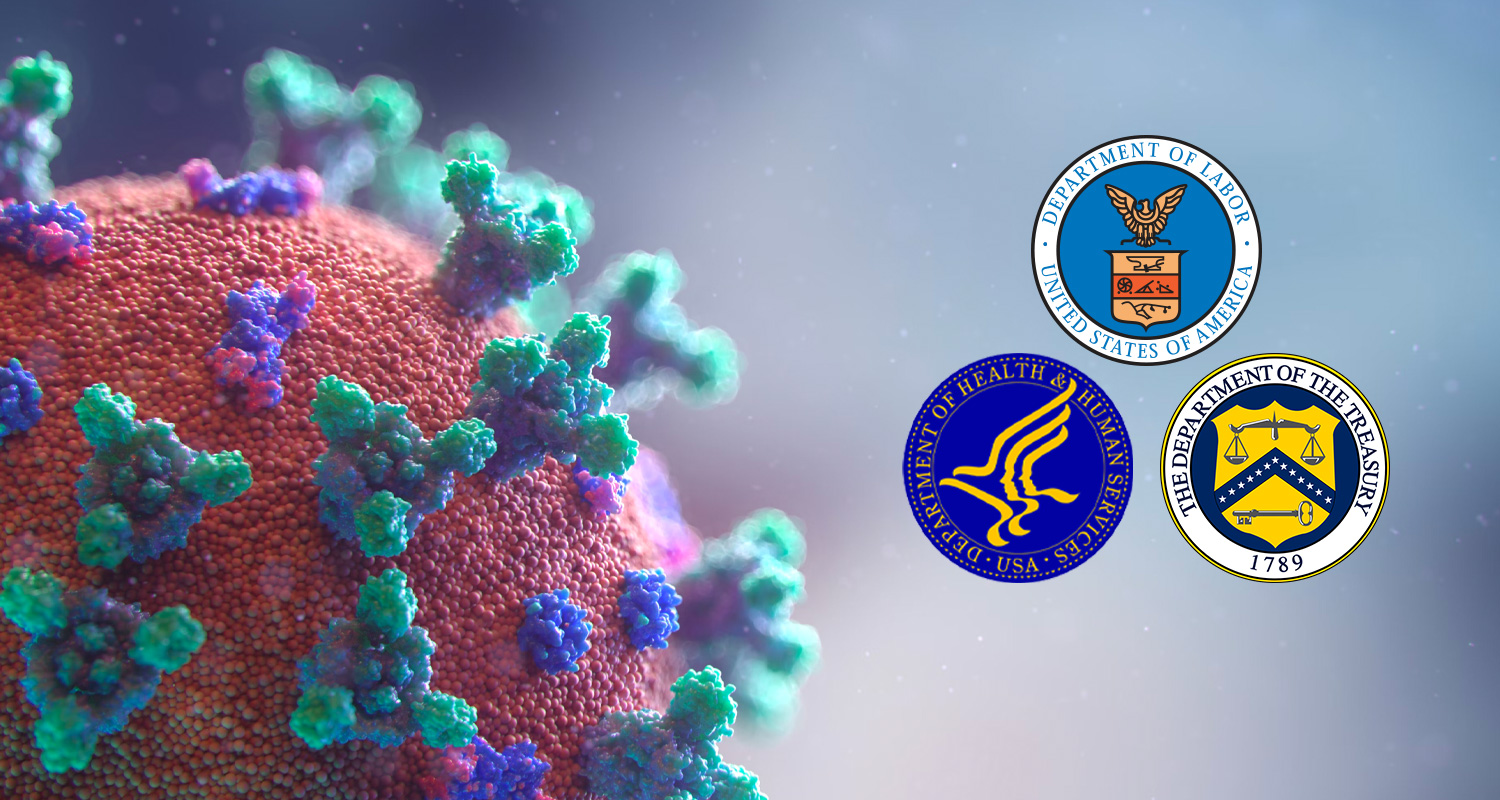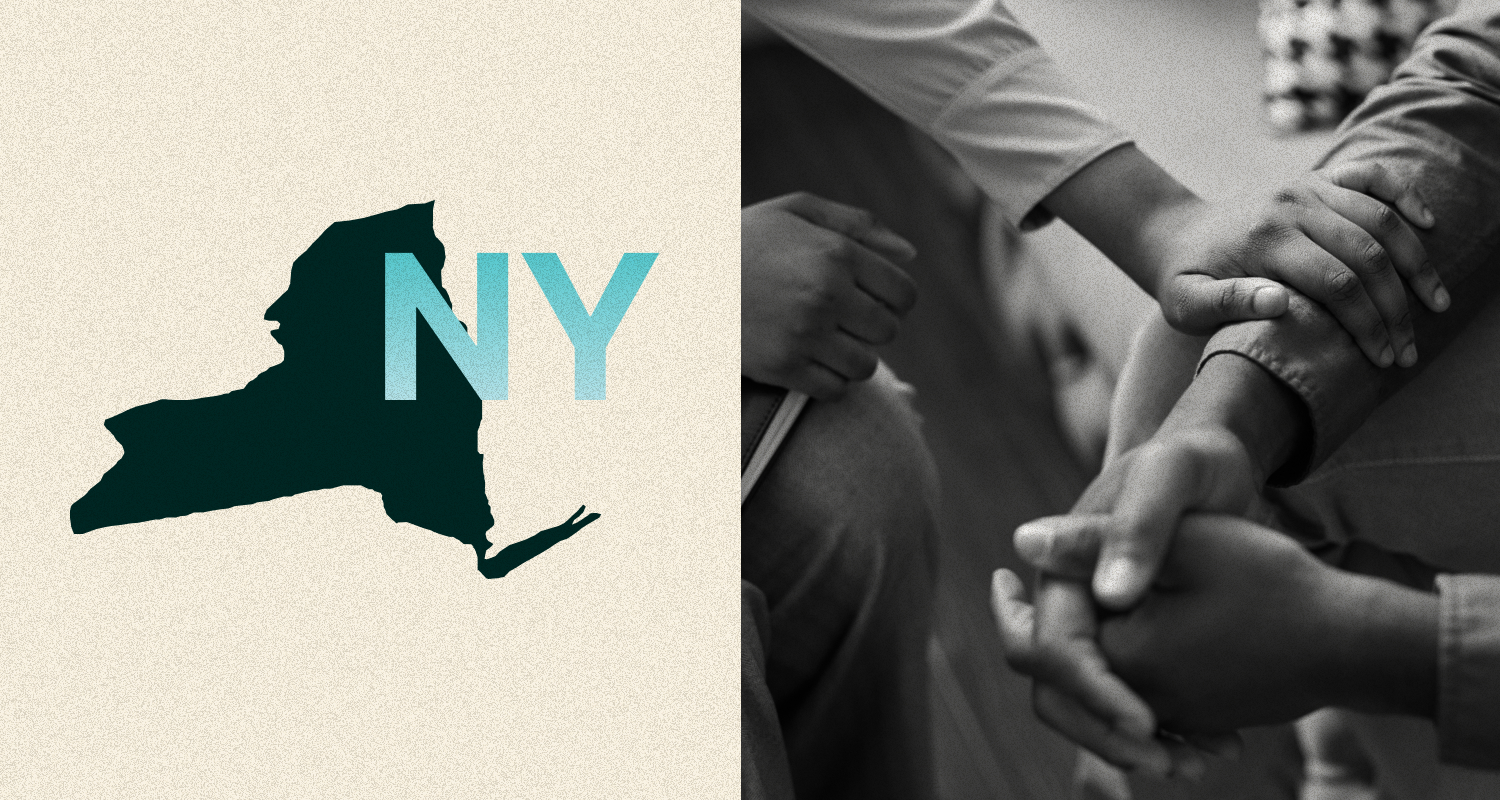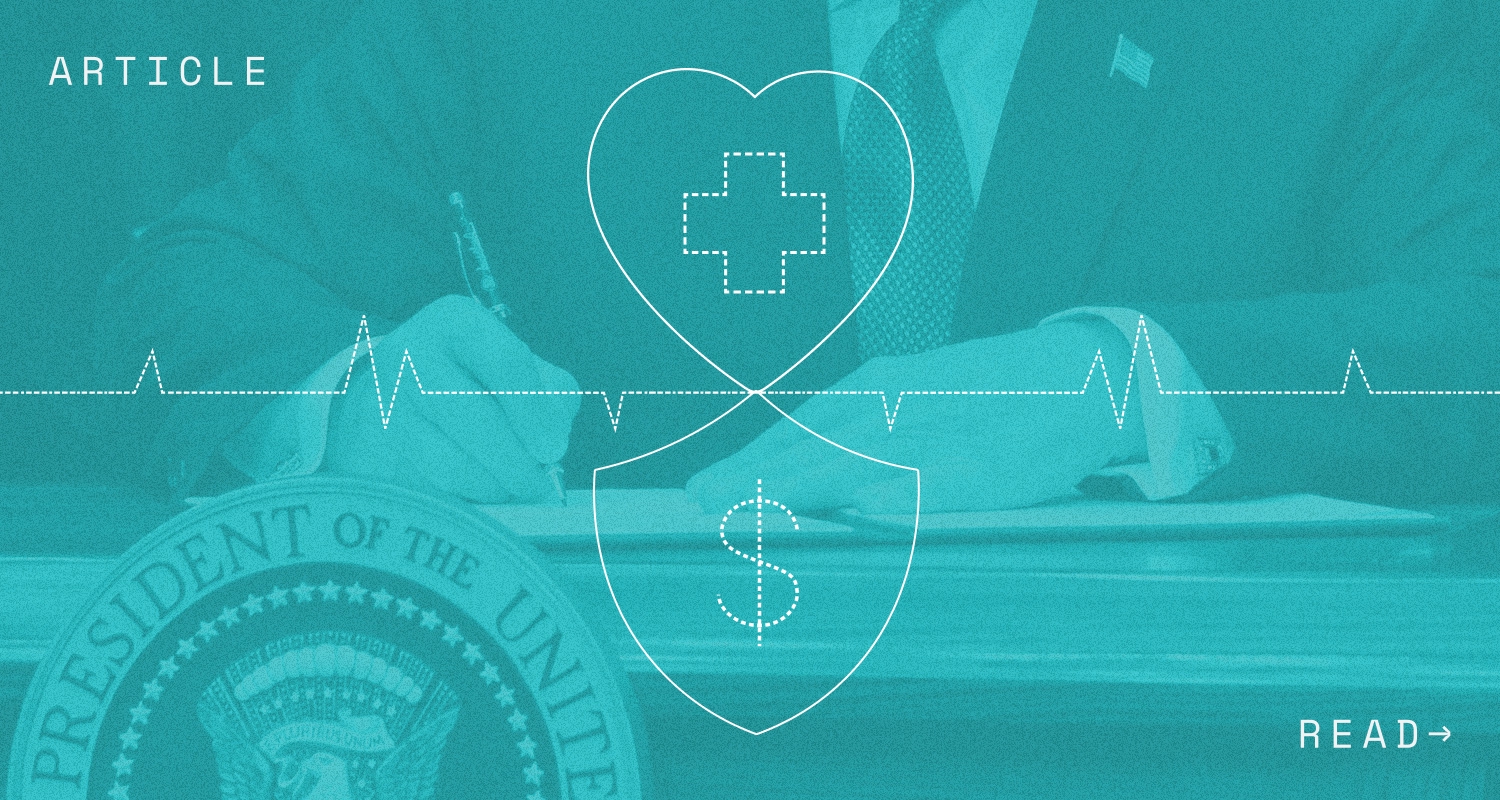Update 4/18/2023: This article is updated to reflect the Department of Labor’s (DOL) recent informal guidance that the Outbreak Period will end as of July 10, 2023.
Recently, the Departments of Labor, Health and Human Services, and Treasury (collectively “the Departments”) issued guidance in the form of FAQs to assist group health plans transition out of the state of a public health and national emergency, which has been ongoing for the past three years. The recent FAQs provide guidance and examples for how plans should handle the deadlines that will be resuming after July 10, 2023 (i.e., the end of the “outbreak period”), as well as clarify coverage requirements and related employer action once the public health emergency is expired.
Background
On January 30, 2023, President Biden issued a Statement of Administration Policy announcing his intent to end the COVID-19 national and public health emergencies on May 11, 2023. Thereafter, the President signed H.J. Res. 7, ending the COVID-19 national emergency approximately one month earlier than anticipated, on April 10, 2023. However, even though the national emergency terminated early on April 10, 2023 – which technically means the Outbreak Period ends a month earlier on June 9th (60-days after the expiration of the National Emergency) – the DOL’s informal guidance explains that they will still consider May 11, 2023, as the start date for the 60-day expiration. Meaning, the Outbreak Period will therefore continue through July 10, 2023.
See our blog COVID-19 Emergency Declarations Anticipated to Expire: Impact to Group Health Plans for further information.
Guidance
Per the DOL’s informal comments, the Outbreak Period will end July 10, 2023 (60 days after the end of the National Emergency), which will impact the following deadlines:
- Employer deadlines to furnish required notices, disclosures, or other documents to participants and beneficiaries pursuant to their obligations under ERISA (e.g., summary plan descriptions (SPD), summary annual reports (SAR), COBRA notices, notice of HIPAA special enrollment rights, etc.).
- Plan participant and beneficiary deadlines to:
- Request enrollment under their HIPAA special enrollment rights (which allow employees and/or dependents to enroll in group health plan coverage mid-year if a HIPAA special enrollment event occurs);
- Elect COBRA continuation coverage and make COBRA premium payments; and
- File benefit claims, appeal adverse benefit determinations, request an external review, and perfect an external review request.
Any extensions in effect for the above deadlines (i.e., those that are still in the 1-year extension window) will expire and the applicable timeframe will resume after July 10, 2023. Q5 of the FAQs provides practical guidance through examples to help employer plan sponsors understand how to administer deadlines after July 10, 2023. Examples from the FAQs include:
- Example 1 (Electing COBRA): Individual participates in employer’s group health plan. Individual experiences a qualifying event for COBRA purposes and loses coverage on April 1, 2023. Individual is eligible to elect COBRA coverage under employer’s plan and is provided a COBRA election notice on May 1, 2023. The last day of Individual’s COBRA election period is 60 days after July 10, 2023 (the end of the Outbreak Period), which is September 8, 2023.
- Example 2 (Electing COBRA): Same facts as Example 1, except the qualifying event and loss of coverage occur on May 12, 2023, and Individual is eligible to elect COBRA coverage under employer’s plan and is provided a COBRA election notice on May 15, 2023. The deadline to elect COBRA is 60 days after the end of the outbreak period (September 8, 2023) because the qualifying event occurred on May 12, 2023, after the end of the national emergency but during the outbreak period.
- Example 3 (Electing COBRA): Same facts as Example 1, except the qualifying event and loss of coverage occur on July 12, 2023, and Individual is eligible to elect COBRA coverage under employer’s plan and is provided a COBRA election notice on July 15, 2023. The deadline to elect COBRA is 60 days after July 15, 2023 (September 13, 2023) because the qualifying event occurred on July 12, 2023, after the end of the outbreak period.
- Example 4 (Paying COBRA Premiums): Individual B experiences a qualifying event and receives a COBRA election notice on October 1, 2022. Individual elects COBRA continuation coverage on October 15, 2022, retroactive to October 1, 2022. Individual has until 45 days after July 10, 2023 (the end of the Outbreak Period), which is August 24, 2023, to make the initial COBRA premium payment. The initial COBRA premium payment would include the monthly premium payments for October 2022 through July 2023. The premium payment for August 2023 must be paid by August 30, 2023 (the last day of the 30-day grace period for the August 2023 premium payment). Subsequent monthly COBRA premium payments would be due the first of each month, subject to a 30-day grace period.
- Example 5 (Special Enrollment Period): Individual is eligible for employer’s group health plan, but previously declined participation. On April 1, 2023, Individual gave birth and would like to enroll herself and the child in employer’s plan, but open enrollment does not begin until November 15, 2023. Individual and her child qualify for special enrollment in employer’s plan as early as the date of the child’s birth, April 1, 2023. Individual may exercise her special enrollment rights for herself and her child until 30 days after July 10, 2023 (the end of the Outbreak Period), which is August 9, 2023, as long as she pays the premiums for the period of coverage after the birth.
- Example 6 (Special Enrollment Period): Same facts as Example 5, except that Individual gave birth on May 12, 2023. Individual and her child qualify for special enrollment in employer’s plan as of the date of the child’s birth, May 12, 2023. Because Individual became eligible for special enrollment during the outbreak period, the extensions under the emergency relief notices still apply. The employee may exercise her special enrollment rights for herself and her child until 30 days after July 10, 2023 (the end of the outbreak period), which is August 9, 2023, as long as she pays the premiums for the period of coverage after the birth.
- Example 7 (Special Enrollment Period): Same facts as Example 5, except that Individual gave birth on July 12, 2023. Individual and her child qualify for special enrollment in employer’s plan as of the date of the child’s birth, July 12, 2023. Because Individual became eligible for special enrollment on July 12, 2023, after the end of both the COVID-19 National Emergency and the Outbreak Period, the extensions under the emergency relief notices do not apply. Individual may exercise her special enrollment rights for herself and her child until 30 days after July 12, 2023, which is August 11, 2023, as long as she pays the premiums for the period of coverage after the birth.
Highlights of additional topical guidance provided in the FAQs include:
- HSA Eligibility: Individuals enrolled in HSA-qualified plans may still receive coverage for items and services related to COVID-19 treatment without first satisfying the applicable annual deductible, until further guidance is issued.
- Public Health Emergency: Clarification regarding the end of the public health emergency, which expires on May 11, 2023:
- After May 11, 2023, plans and insurers will no longer be required to cover COVID-19 at home or in person diagnostic tests without cost sharing; however, the Departments encourage plans and insurers to continue providing this coverage without cost sharing. Such decisions will be left up to insurance carriers and self-funded employers and their third-party administrators.
- After May 11, 2023, administration of the COVID-19 vaccine will still be covered without cost (as are other preventive care vaccines) by health plans and insurers; however, plans and insurers will not be required to cover vaccines administered by out-of-network providers. The FAQs confirm that if the plan or insurer does not have a provider in its network who can provide the vaccine, the plan or insurer must cover the vaccine when furnished by an out-of-network provider in the same manner as would apply to in-network providers (and may not impose cost sharing).
- Plans and insurers must consider the date an item or service was rendered, not the date the claim was submitted, when determining if an item or service was provided during the public health emergency.
- Plans and issuers are encouraged to notify participants, beneficiaries, and enrollees of key information regarding coverage of COVID-19 diagnosis, treatment, and testing, including the date the plan or insurer will stop providing coverage and/or begin imposing cost sharing requirements or other medical management requirements.
- Notice requirements: As background, plans and insurers must provide 60-days prior notice of a change that impacts the content of the Summary of Benefits and Coverage (SBC). The Departments clarify that they will consider the 60 day advance notice of any of the COVID-19-related treatment changes due to the end of the public health emergency as satisfied if (1) the plan previously notified the participant, beneficiary, or enrollee of the general duration of the additional benefits coverage or reduced cost sharing (such as, that the increased coverage applies only during the public health emergency), or (2) the plan notifies the participant, beneficiary, or enrollee of the general duration of the additional benefits coverage or reduced cost sharing within a reasonable timeframe in advance of the reversal of the changes. Importantly, notification in a prior plan year is not sufficient; notification must have been provided during the current plan year based on the FAQs.
Employers should review the FAQs to better understand plan administration and coverage requirements that will change as a result of the public health and national emergency expiration. Formal departmental guidance confirming that July 10, 2023, is in fact the end of the Outbreak Period is anticipated in the coming weeks. We will continue to monitor and communicate any updates, as applicable.
Additional Resources
- FAQs Part 58
- Sequoia Foreword: COVID-19 Emergency Declarations Anticipated to Expire: Impact to Group Health Plans
The information and materials on this blog are provided for informational purposes only and are not intended to constitute legal or tax advice. Information provided in this blog may not reflect the most current legal developments and may vary by jurisdiction. The content on this blog is for general informational purposes only and does not apply to any particular facts or circumstances. The use of this blog does not in any way establish an attorney-client relationship, nor should any such relationship be implied, and the contents do not constitute legal or tax advice. If you require legal or tax advice, please consult with a licensed attorney or tax professional in your jurisdiction. The contributing authors expressly disclaim all liability to any persons or entities with respect to any action or inaction based on the contents of this blog. © 2023 Sequoia. All Rights Reserved.




